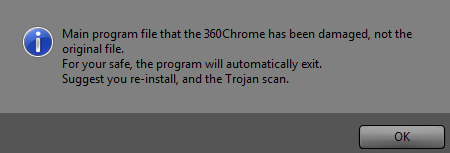Leaderboard
Popular Content
Showing content with the highest reputation on 10/20/2023 in Posts
-
The browser might already had the chance to connect to the servers and verify against the original china files, if it suggests you to "download the latest version".3 points
-
The error we both see with @Dixeldiffers with yours, if are to assume you get it when you simply swap the files, though it would still not explain our error.3 points
-
as promised .heic is brought to windows xp closing the gap for xp having a very new image encoder and decoder (and nothing using any other modules, engines or weird operating system dependencys) the resulting image is even better then the one on wikipedia https://en.wikipedia.org/wiki/High_Efficiency_Image_File_Format reason behind this i only choosed the best options, better internal code, better decisions, and disregarded code that decreases image quality ----- APP "WinXP HEVC/HEIF/H265 Image En/Decoder explained" The Encoder: Encode By Filename: allow you to select a file this heic encoder supports : .jpg, .png, .tif and .y4m (raw YUV format) the encoder make a .heic file from the choosen file Encoder By Folder: this read "Encode By Folder Searched Format Ending" if you have choosen jpg then it will search all .jpg files in the choosen folder actual chooses: png, jpg, tif or y4m if the entry was jpg then the encoder will encode all .jpg files in that folder to .heic this by folder was made so you can encode many files instead of always 1 file, while going to drink some coffee Encoder Complexity: "placebo" is the best setting here i actually dont see any reason to choose a different setting that actually only results in less image quality (best: 1: placebo, 2: veryslow, 3: slower, 4: slow, 5: medium, 6: fast , 7: faster, 8: veryfast, 9: superfast, 10 ultrafast) why we should we set a setting that decreases image quality? (basicly i not even wanted to have this box) (1 word about this, placebo use the best compressions tricks therefore the time is longer(more code = more time), the others try to speed up this (and leave out some functions, tricks, try to end the encoder before it really was done), it might not always increase the image - but you can be certain you got the best option (and the highest amount of pixels possible) also it can happen that that your image might not challenged the encoder for its maximum, then a "faster" setting dont have that much difference, still it can result in less amount of pixels, with placebo you are certain to get the maximum it really raise questions to use the others, you can make a big jpg file and you may dont see the image difference that much - but why ? are we making a jpg or are we making a high efficienty image encoder ?) Hardware Acceleration: makes use of hardware registers such as MMX, SSE and AVX this speed up encoding time a lot since the encoder is very complex image encoding can take time hardware acceleration makes encoding a lot faster notice: depending on your cpu power since the encoder is complex can take some time (if so keep a look "Encoded Image Files") (MMX, SSE and AVX are speed hardware registers they are between 64 and 512 bits wide, depending what one is available (yes in 32 bit)) Quality: controls the filesize of your .heic file, the lower this number the smaller your .heic file lossless: that option is not very useful as the real question is how well the pixels was preserved making a compression (we actually dont make a raw format - we make a compression) so better set this option to 0 (it dont make a real compression) Tuner: this increases the image quality even further good settings are psnr and ssim - the other settings only decrease image quality the tuner increased the amount of pixels, as said before its a extra function to improve more pixels more code = more time - this makes a good example - if you leave out many of good possible tricks you might end up in a less fancy picture ----- The Decoder: you have to choose a output image format for your .heic file (we have png, tif, jpg, and y4m) png compression level (0-9): png compression level -1 actually represents png compression 6 i actually dont see a well reason to have -1 as option, since -1 just represent compression 6 (you can try this out by looking at the filesize of the resulting .png file (try -1 and 6 they are the same) -1 actually is called png_default_compression what then is defined as 6 0 means no compression (this is good to make a compare how well your .heic file was preserved) increasing values make higher compressions losing more pixels (again 6 is equal to -1) 0 is the best png compression regarding pixels going from 0 to higher numbers decreasing image quality (higher numbers create smaller file sizes) (and make a compromise about pixels and compression) png is said to be lossless, but i only know for certain if option 0 is selected that it is a lossless copy. (what makes a 1:1 copy of the .heic file as it exits) jpg compression (1-100): nothing much to say here the higher this value the better the resulting jpg image notice higher values also cause bigger filze sizes 90 seems to be a good choice Decode By Filename: this button actually reads out "Decode In Format" why ? because if you select a .heic file the decoder has to know the decompression format valid formats are: png , jpg , y4m, tif Decode By Folder: reads out "Decode In Format" then the selected folder is searched for .heic files and then the decoder decodes all .heic files into the image format you set in "Decode In Format" Multi-pass: this makes a second image and compare the result with the first image - according to information this also improves image quality a bit (the h.266 says for example 1-3 % in average, then something about maybe sometimes more) Create A Subfolder: this allow you to put a folder where the WinXP HEIC en/decoder put its files it trys to create that folder, but you also can create that folder yourself this also avoid the name problem when controlling with "By Folder" ------ rumors say .heic is the best image encoder at the moment as we know .heic passes jpg, jpg2000 and jxr (jpeg xr) what we can see in the wikipedia site for heic maybe .heic also other jpg formats like the jxs format (what is rather speed orientated then quality orientated) there are some (jpeg xt, jpeg xs, jpeg ls, jpeg xe, jpeg xl) (https://jpeg.org) if someone wants to makes the compares the h.266 by frauenhofer or jxl would be candidates to try or even the others ... i actually never seen a h.266 frauenhofer image yet (updated the links): https://www.file-upload.net/download-15405155/WinXP_HEIC.zip.html https://www.mediafire.com/file/g9t94vi3dr4gycl/WinXP_HEIC.zip/file2 points
-
Interesting, but still don't understand what does it have to do with HEVC mentioned in the title (H265). Will Nero understand this format?2 points
-
I didn't mix anything. But the issue is interesting since mixing would also trigger the warning. So, does it appear only when you're online?2 points
-
So perhaps some telemetry isn't completely removed in 2044, and it triggers the "trojan warning" reporter. Do you all get the Trojan warning while being online or offline? Perhaps the browser connects to China to verify the integrity, and "sees" it's not as it should be? Interesting. This would explain no warning on the original version.2 points
-
Thanks for yet another confirmation! Now both executables scan browser files and tell something's fishy with the rest of the files, interesting. So this is not "only Vista" related, like someone tried to imply earlier, I see you're on XP Pro x86.2 points
-
2 points
-
Strictly from Speedometer 2.1 with only one run each -- 2044 scored 75.5... 1030 scored 75.2... 2036 scored 74.8... This is on XP x64 on a fairly old i7-4770 @ 3.4 GHz with 16 GB RAM. So if we really want to "squeeze the turnip" for every last tiny drop of performance, seems 2044 is the "fastest". But those numbers are so close that we really are technically "within margin of error". I'll try a few other benchmark just for curiosity.1 point
-
I figured that's why I was asking my question last night. Then I realized it must be a bug! I'm not sure how to fix it. Edit: I can repro this behavior on my other machine. Edit 1: I also noticed some icons in the overflow menu are blank but when I drag them out into the systray the icon reappears. It's inconsistent but happening on two machines. Restarting the program fixes the blank icon. @Tihiy I fixed it but it definitely seems like something in the registry was messed up. I went here: I shut off Network, Power, and Volume. Then I restarted explorer and switched them back on. Now it works: This process worked on both machines.1 point
-
confirmed , and after clicking on the > after the 4 squares (details) it opens the 360chrome trusted root and not the windows cert manager. edit : trusted certificates are fine in translation and function.1 point
-
I don't remember when I said I don't use 360Chrome, you got me confused with someone else, nothing is hijacked since the Trojan message comes from the browser itself. Though, it's a bit different on XP and Vista. Did you have the chance to compare 1030 with 2044 with enough real life usage? Is it faster? Maybe not worth it? Or maybe worth to search for the cause?1 point
-
Then maybe simply remove it? It wouldn't a problem, would it? I guess the browser will only be faster, no?1 point
-
I don't use the ex-kernel, I only use it sometimes - locally, and it can't affect this browser. My Vista x64 is original, but I had to update it to run modern games from 2021, yes, I hate this fact, I don't like updates. I'm now at build 6003. I'm just curious, nothing more, but thanks.1 point
-
Interesting, it suggests you to download the latest version, mine doesn't, look. https://msfn.org/board/topic/185049-arcticfoxienotheretoplaygames-360chrome-v1352044-rebuild-1/?do=findComment&comment=12540041 point
-
1 point
-
Why the thread Extensions and custom buttons for UXP browsers - Corrections, modifications, adjustments, and special recommendations is located in the forum Browsers working on Older NT-Family OSes, does not need to be explained any further and is crystal clear . Same for userscripts to inject further functionality into old, legacy browsers. But in terms of the thread Monkey Scripts, the creator @NotHereToPlayGames should first be asked whether he agrees to a relocation. It is not acceptable that someone here simply orders such a relocation. That is rather a no-go.1 point
-
And here's @UCyborg's polyfill for structuredClone (Chrome before v.98; K-Meleon, New Moon 27, FF 45; not needed on UXP-based browsers or Serpent 55) // ==UserScript== // @name Inject structuredClone() Polyfill [98] // @version 0.0.1 // @match *://*/* // @run-at document-start // @grant none // ==/UserScript== if (typeof self.structuredClone !== "function") { self.structuredClone = function (value) { if (Array.isArray(value)) { const count = value.length; let arr = new Array(count); for (let i = 0; i < count; i++) { arr = self.structuredClone(value); } return arr; } else if (typeof value === "object") { let obj = {}; for (const prop in value) { obj[prop] = self.structuredClone(value[prop]); } return obj; } else { return value; } } } This will fail if an array or object property references itself, but works well in most cases.1 point
-
What - no polyfills? Here are a few contributed by n16s. Should be good on both Chrome (prior to version indicated) and FF-derived browsers. // ==UserScript== // @name Inject findLast() Polyfill [97] // @version 0.0.1 // @match *://*/* // @run-at document-start // @grant none // ==/UserScript== if (!Array.prototype.findLast) { Object.defineProperty(Array.prototype, "findLast", { value: function (predicate, thisArg) { let idx = this.length - 1; while (idx >= 0) { const value = this[idx]; if (predicate.call(thisArg, value, idx, this)) { return value; } idx--; } return undefined; } , writable: true, enumerable: false, configurable: true }); } // ==UserScript== // @name Inject findLastIndex() Polyfill [97] // @version 0.0.1 // @match *://*/* // @run-at document-start // @grant none // ==/UserScript== if (!Array.prototype.findLastIndex) { Object.defineProperty(Array.prototype, "findLastIndex", { value: function (predicate, thisArg) { let idx = this.length - 1; while (idx >= 0) { const value = this[idx]; if (predicate.call(thisArg, value, idx, this)) { return idx; } idx--; } return -1; } , writable: true, enumerable: false, configurable: true }); } // ==UserScript== // @name Inject randomUUID() Polyfill [92] // @version 0.0.1 // @match *://*/* // @run-at document-start // @grant none // ==/UserScript== if (!('randomUUID' in crypto)) crypto.randomUUID = function randomUUID() { return ( [1e7]+-1e3+-4e3+-8e3+-1e11).replace(/[018]/g, c => (c ^ crypto.getRandomValues(new Uint8Array(1))[0] & 15 >> c / 4).toString(16) ); };1 point
-
1 point
-
1 point
-
The description fits a lot of websites as of now, btw, another typo.1 point
-
1 point
-
I run it with all bloat removed, incuding d3d47 and LibGL. Of course no "doctor". Didn't you read the Trojan message? It says "damaged", not "missing".1 point
-
Most importantly, how would you explain I can run the original 2044 perfectly fine, with or without my starter?1 point
-
1 point
-
I know I posted this before and it got deleted. Privacy was lost in antiviruses the day cloud scanning became a thing. Discussing which antiviruses are more private because this country or that country appeals more to you is pointless. All antiviruses are data collectors unless you can turn off cloud scanning. In most antiviruses these days it's not possible to do that. If we know all of them collect data all we can do is 2 things. Either don't use any antivirus or decide which country appeals more to your privacy tastes. In my case since I live in a US territory. If I have to give some of my data I rather give it to some country far way than to participate in my own countries data monitoring. Remember covid ? In some US states, cellphones where tracked to see if people where staying at home. I don't know what's more totalitarian than that in a place of "democracy". I don't use a smartphone but if I have to give some data I rather give it to Russia. In any rate, I still think that in an antivirus thread, all antiviruses from all countries should be listed. Pros and cons of each one so that people decide for themselves . And let the politics be discussed in a separate off-topic thread about politics.1 point
-
Please INSTALL Kaspersky BEFORE we continue this TALKING IN CIRCLES CHARADE. The only telemetry is an injected script that Kaspersky's own SETTINGS allow you to TURN OFF. @AstroSkipper - is this the intent of this thread? to just "wear down" any and all that have a different opinion? Germany vs Italy? "we will win all arguments with those that disagree with us by making it totally EXHAUSTING for opposing views to present their case." I'm done. NOT WORTH MY TIME. I do like Panda. Not enough to actually start using it on anything but a spare laptop. Hope the thread becomes USEFUL to SOMEBODY. But no, NOT TO ME. Not if it's just going to be a "EU-Divide" and two boxers returning to their corner when the bell rings. Only to jump into the center and dance around in circles while they PUMMEL each other. Ding ding. The bell has rung.1 point
-
@Dixel - I really think you are "intentionally" missing the point. The Kaspersky CVE Report pertains to a Unique ID String. Period. Nothing more, nothing less. That unique ID string is NOT buried inside a .dll that requires mods to remove. The .dll installed on your computer is identical to the .dll installed on my computer. My unique ID string is not the same as your unique ID string. I am not part of the Anti Kaspersky Agenda. My directives are not being blinded by that Agenda. Kaspersky did send a unique ID string and it was introduced in the fall of 2015. Kaspersky removed that unique ID string in June of 2019. Non-evasive (no modding) methods to prevent this were common knowledge in 2016. There is a setting right there in the Kaspersky GUI to disable this behavior. In Kaspersky 2016, it was in Settings -> Additional -> Network -> Inject scripts into web traffic to interact with web pages People that install with "defaults" would never see this - us here at MSFN are smarter than that, I would hope. uMatrix removes that "injection". I will verify but I have to assume that everybody's beloved uBO also removes it. I have Kasperky INSTALLED. Perhaps any and all discussions pertaining to Kaspersky should be limited to THOSE THAT HAVE IT INSTALLED? I'm done. Stick a fork in me.1 point
-
I find that interesting and thought I was the only one. I have been using XP Pro 64-bit for over 10 years with no antivirus program installed. Surfed the Internet continuously and downloaded many programs and my computer has never been infected. Mainly was careful with what site to go to and used common sense. May have been lucky also. Any program from a site I was not sure of, I would upload to Jotti's Malware Scan or VirusTotal. Some years ago, I did install Malwarebytes Anti-Malware Version 2.2.1.1043, and that was the last that would install on XP 64-bit and definitions stopped last year. Do you use a firewall on your XP 64-bit machine?1 point
-
The EU is divided on this. So too will MSFN Members be divided. This thread should not be about the loudest squeaking wheel getting the oil. It's an international forum not tied to any specific Government Agency's "perspective". When we (any one of us) act like it is, that is where POLITICS enter the picture and we need to AVOID that. PLEASE.1 point
-
I submit that you should also consider this perspective - if, and again a big IF, but if I find "unique ID strings" in *ALL* of the security programs of this thread, does that mean that the entire thread should be shut down? I'm not claiming that they exist. But I do know that *ALL* anti-virus programs manufacturers have been "slapped on the wrist" throughout the many decades I have used computers for whether or not their "data mining" crossed the line on Privacy Rights.1 point
-
Update notification! Contrary to the system requirements published by RealDefense in their FAQ (actually Windows 7 and higher), SUPERAntiSpyware Professional has been updated to the version 10.0.1254 via automatic update and is still compatible to Windows XP. It works as it should without any problems. Here is a screenshot showing the main interface of SUPERAntiSpyware Professional X 10.0.1254 in my Windows XP partition: Cheers, AstroSkipper1 point
-
@Cixert! You are really helpful here. Thank you for your contributions! IObit Malware Fighter, another candidate which is already on my list. Unfortunately, I have had the same unpleasant experience as you. IObit tries to push their Advanced Systemcare product on every user. This is totally annoying. I have also noticed the increased consumption of resources. And when you uninstall software from IObit, there is always something left over. Then it's a matter of searching and manual cleaning.. On the plus side, IObit Malware Fighter is still compatible with Windows XP, for whatever that's worth. Unfortunately, in Windows XP we can't be very picky and have to consider every option, even those we would normally discard. At the moment, we still have other options, fortunately.1 point
-
That's what usually is said in terms of XP and Vista. Partly true, partly not! I think we already know all arguments. My installation is very old. It did not register itself in Security Center. I can't say what would happen if I did a fresh installation. In this case, it is a proper name and is always written as the author intended, regardless of spelling. We don't really want to go into further linguistic considerations, do we? Apart from that, it would be unfortunately off-topic.1 point
-
1 point
-
Or his Chromium simply lacks the proper codecs. As an example, Opera doesn't have H264 codec. And only some of the ungoogled variants have the full set of codecs.1 point
-
Thank you for Your attention and my best wishes to You. You're welcome! And dito! I love it!1 point
-
Hello @Snowshoe! Here are two screenshots with the settings of my SocksCap64 installation: If you have any further questions, do not hesitate to ask here! Cheers, AstroSkipper1 point
-
Hello @cmalex! Welcome back! I hope everything is OK with you. I send you my warmest greetings! And thanks for helping here! Always appreciated! Cheers, AstroSkipper1 point
-
Hello members, will you please help me to remove the "non-indexed" warning from Windows Vista. Thanks everyone who helps. Wonderful and friendly forum, as I can see.1 point
-
If I turn on the indexing option, the button shows up. But it's not what I wanted...1 point
-
1 point
-
I can't imagine there's no answer to this question ...1 point
-
"Protecting Your Malware" by Adam Chester , Hacker and Infosec Researcher https://blog.xpnsec.com/protecting-your-malware/1 point
-
Updated the prev. post with another image with now twelve videos un-muted playing at the same time , for you ! Another US IP (I think from New York) .1 point
-
1 point








